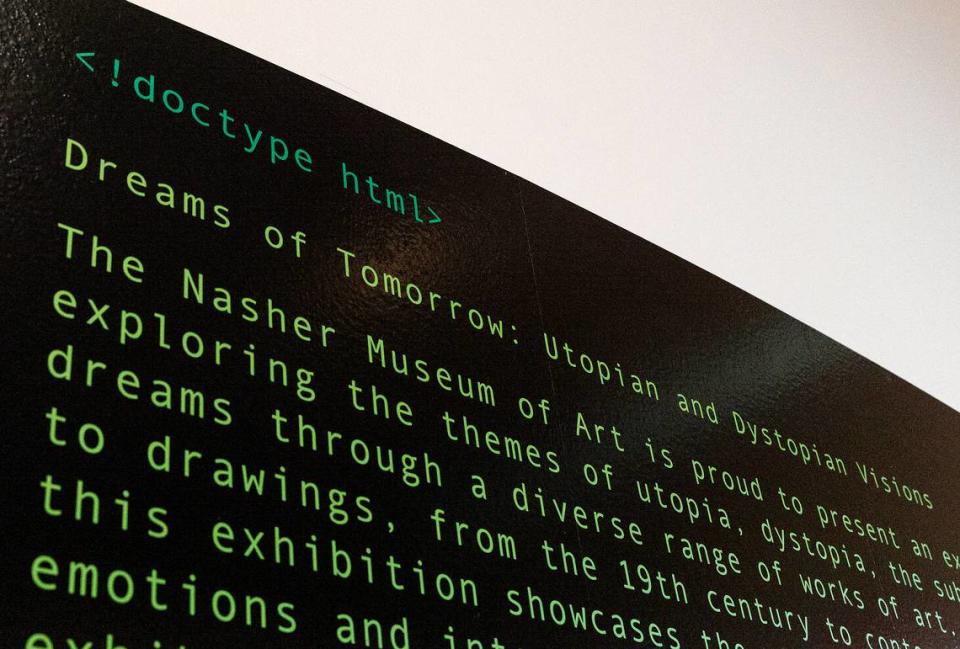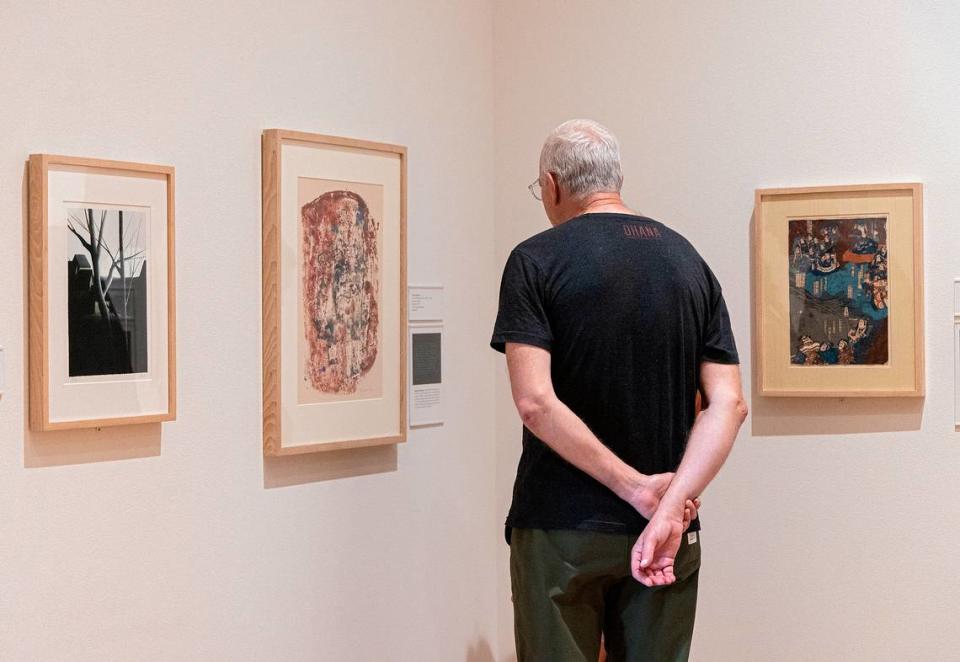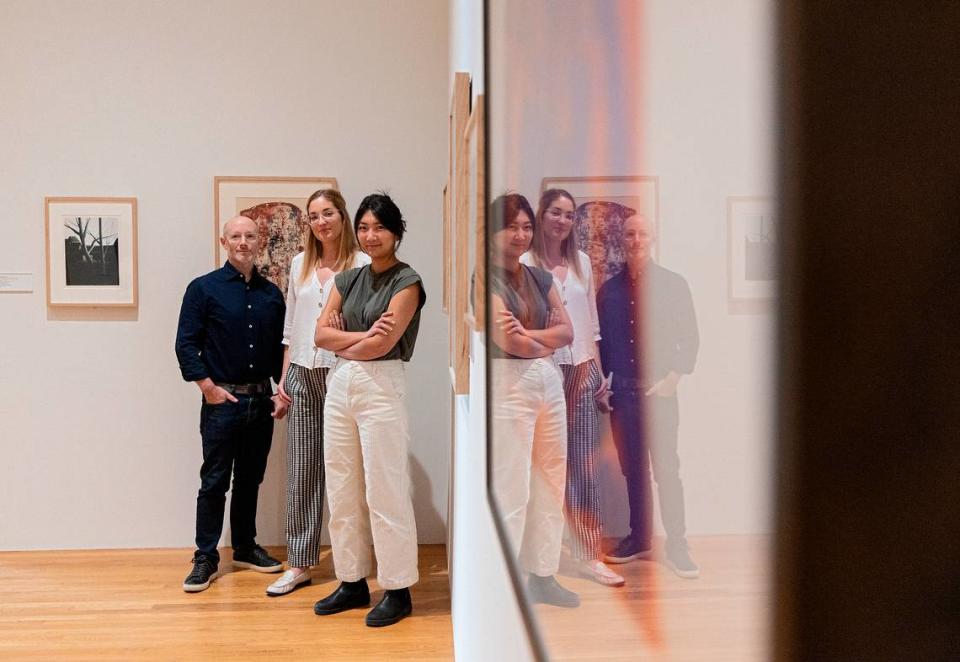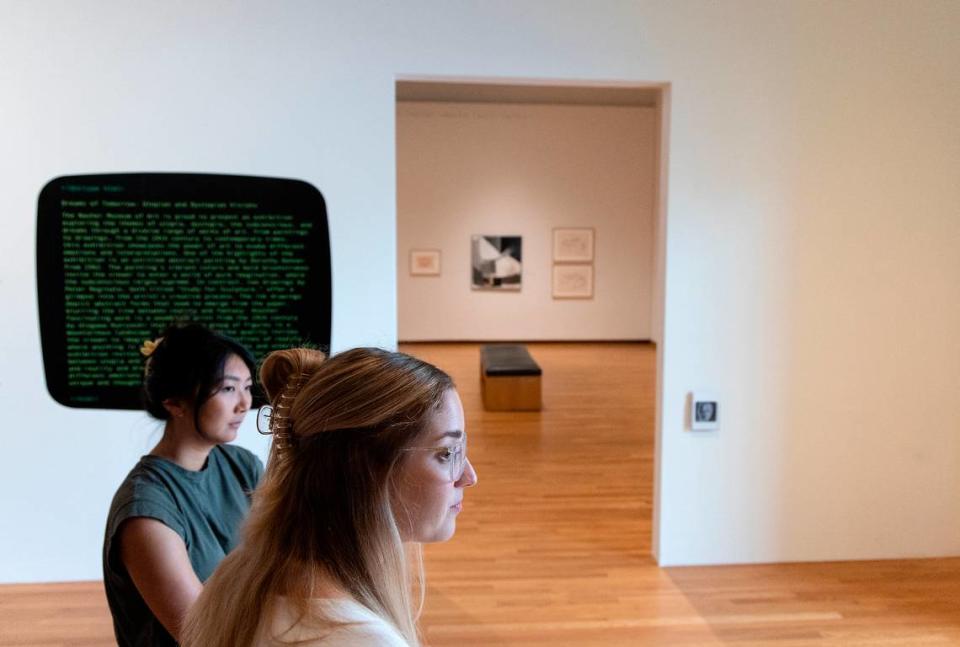Meet the new curator at the Duke art museum. It isn’t human.
The new curator at Duke University’s Nasher Museum of Art makes basic mistakes.
It called one painting a sculpture and mistitled another. From the museum’s 14,000-item collection, it curiously picked a nondescript damaged bowl to display alongside a Dalí. And the language it writes to accompany artwork is somewhat rigid and repetitive; on at least four occasions, it “invites” visitors to appreciate a “meticulous” piece.
Yet at the same time, this curator has assembled a credible exhibit at a speed and in a manner no human could match.
Yes, it is artificial intelligence.
On Sept. 9, the art museum at the private Durham university opened one of the world’s first AI-generated art exhibits, featuring 20 man-made pieces selected, ordered, and described by the large language model ChatGPT.
Titled, “Act as if you are a curator,” the project showcases the current capabilities and shortcomings of an emerging technology that can simultaneously be incredibly smart and dumb. It will perhaps also be a novel way museums present their collections in the future.

“It brought out works that had not been on display for a very long time, if at all at the museum,” said Julia McHugh, director of academic initiatives and curator of Arts of the Americas.
Whether all these works make sense in the same room is another question.
Ingenious connections and peculiar choices
Around six months ago, McHugh and her colleagues set out to use ChatGPT, the popular new generative AI platform from the company OpenAI, to fill the Nasher’s Incubator Gallery, a 600-square-foot room set aside for experimental projects.
Quickly, the curators ran into roadblocks. First, ChatGPT wasn’t able to access their collection. And when the AI got stuck, it sometimes made up, or “hallucinated,” artwork that doesn’t exist rather than admit it was lost. So, they contacted Mark Olson, a professor of visual studies at Duke, who led students to customize a ChatGPT interface for the museum.
ChatGPT intakes data and maps relationships between keywords. The human brain does this too — like linking hot with fire — but OpenAI’s platform makes these connections, called dimensions, on a scale beyond human ability. Olson is aware of only a few other museums that have made their own bespoke AI models.
The Nasher team, including chief curator Marshall Price and curatorial assistant Julianne Miao, prompted their AI to suggest themes for an exhibit that would resonate with a college art audience. Somewhat on the nose, the artificial intelligence proposed ideas around dystopia, utopia and the subconscious.
Naming its exhibit “Dreams of Tomorrow: Utopia and Dystopian Visions,” the ChatGPT model selected relevant pieces from the Nasher collection and chose the sequence in which the art would hang. The curators said the AI performed better when they used polite language.
So, how’d it turn out?

“It’s plausible,” Olson said. “It’s certainly not a set of works that would (normally) be put together. I think a critic would read it as either incoherent or adventurous.”
Price, the chief curator, marveled that the AI selected two pieces he had never thought about in conjunction— a screen print from young visual artist Tunji Adeniyi Jones and a Raphael Soyer lithograph — that each portray the contours of human bodies.
“We wanted to give the AI as much curatorial agency as possible throughout the process,” he said.
Some of the picks fit neatly with themes of utopia, dystopia, and subconciousness — including two paintings by Salvador Dalí (the AI wanted to feature even more of the famous surrealist’s work.) Other selections were a stretch, like a Mayan ceramic bowl the staff called “one of the least impressive examples of pottery traditions across the Mayan region in our collection.”
“We learned how limited it is, at the moment at least,” Price said.

The curators asked ChatGPT to write 50-word descriptions besides each piece. Directly below, Nasher staff wrote responses to clarify any errors. For example, the AI confused an acrylic painting by sculptor Dorothy Dehner with a sculpture.
“It doesn’t have a sense of aesthetics,” McHugh said. “So, the choices that it made were based off of textual information: titles, keywords and descriptions. It doesn’t draw on visual information of the works.”
Splitting the art community
The exhibit, which runs through Jan. 14, has proven somewhat controversial among art lovers. In the comments section of a recent New York Times article on the exhibit, some readers applauded the Nasher for embracing AI as a helpful tool while others slammed the museum for being “lazy.”
“There’s a general culture around the perceived sacredness of curatorial work,” Miao said. “It has to be the hand of a curator who’s had a specific education background who’s able to pull this off. So, bringing AI to that is blasphemous to some people.”

Price said the Nasher is “leaning into the demystification of the curatorial process,” and happy to offer a glimpse into what this new technology can do.
The curators pointed out many of the negative reactions could stem from people’s overall concerns regarding artificial intelligence and how it is starting to shape everyday life.
As it improves, its impact could begin to trickle to more galleries.
“The technology is constantly changing,” Olson said. “Is it good enough for places that don’t have resources? Is it good enough for institutions that are looking to cut costs? I think AI in general raises those questions.”
Open Source
Do you enjoy Triangle tech news? Subscribe to Open Source, The News & Observer's weekly technology newsletter and look for it in your inbox every Friday morning. Sign up here.

